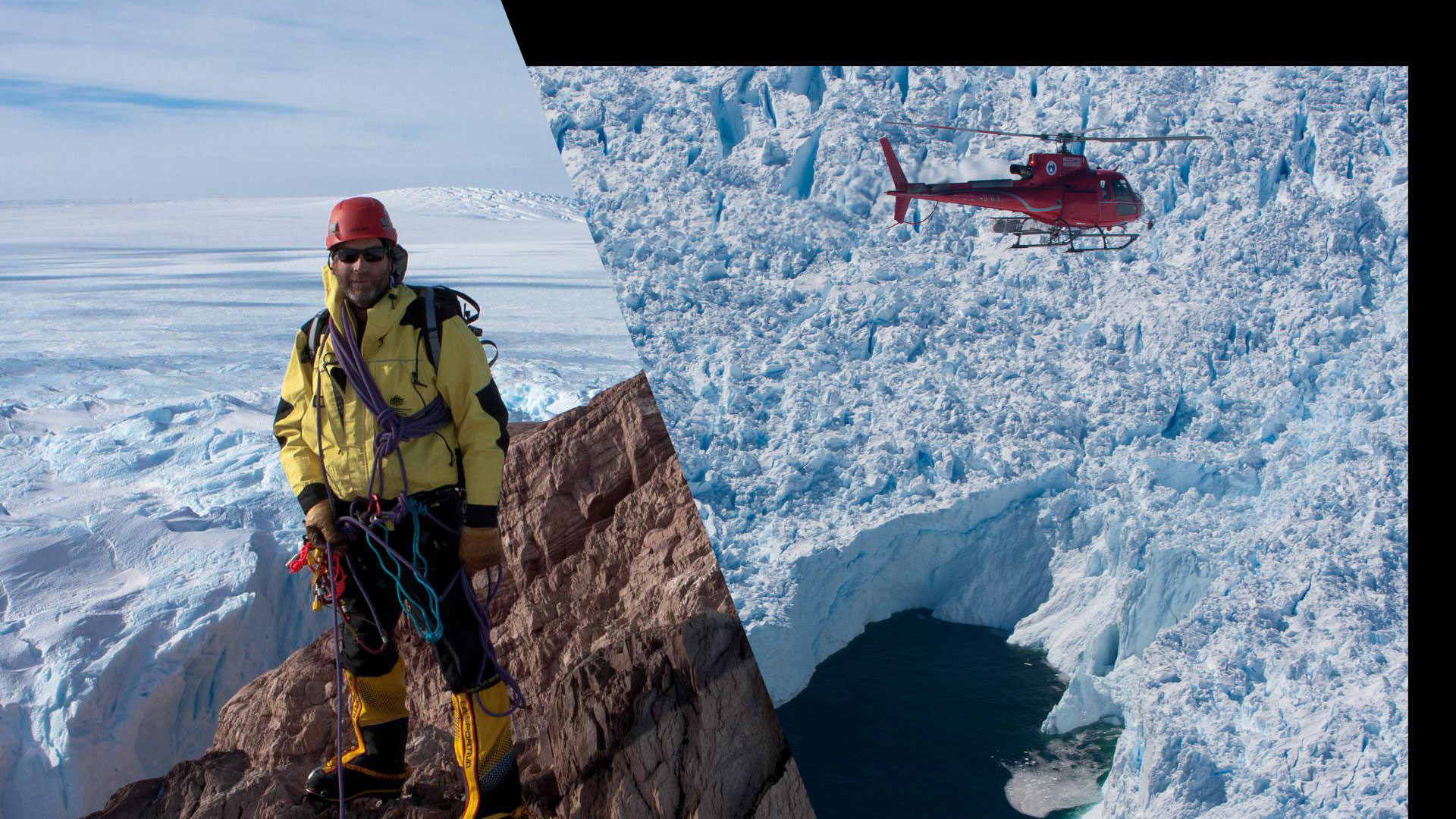The Denman Glacier and Shackleton Ice Shelf
Denman Glacier is a glacier 11 to 16 km (7 to 10 mi) wide, descending north some 110 km (70 mi), which debouches into the Shackleton Ice Shelf east of David Island, Queen Mary Land.
Denman Glacier, located in East Antarctica retreated about 5 km in the past 20 years, critically the grounding line rests now on a 5 km wide, 1,800 m deep canyon, which goes even deeper farther inland, down to astonishing 3500 meters, the lowest point on the planet not covered by liquid water.
Significant changes have taken place on Denman Glacier and Shackleton Ice Shelf. The floating section of the glacier experiences vigorous ice melt in contact with the ocean, which suggests the presence of Circumpolar Deep Water. However, there is no historical oceanographic data near the glacier. https://www.pnas.org/content/116/4/1095
The grounding line is the point beneath a glacier where the ocean, bedrock, and ice all meet. Because the canyon presents a potential pathway for warmer waters to further erode the glacier, Denman glacier is considered a significant threat for more sea level rise.
NASA scientist Virginia Brancato noted, ‘If I have to look at East Antarctica as a whole, this is the most vulnerable spot in the area.’
In light of the climatic changes, researchers now consider that Denman glacier has the potential to undergo rapid, irreversible retreat, due to the presence of a retrograde bed on the western flank of the glacier and the likely presence of warm water in the sub-ice-shelf cavity.
This marine glacier configuration, with a retroggrade slope downhill farther inland, where a glacier sits on land, is known as Marine Ice Sheet Instability.
In it’s entirety, the Denman Glacier contains ice mass, equivalent, it could contribute to an additional 1.5 m rise in global sea level.
Denman Glacier is one of the largest in East Antarctica, with a catchment that contains an ice volume equivalent to 1.5 m of global sea-level and which sits in the Aurora Subglacial Basin (ASB). Geological evidence of this basin’s sensitivity to past warm periods, combined with recent observations showing that Denman’s ice speed is accelerating, and its grounding line is retreating along a retrograde slope, have raised the prospect that it could contribute to near-future sea-level rise.
The recent changes in the Denman system are important because Denman’s grounding line currently rests on a retrograde slope which extends 50 km into its basin (Morlighem et al., 2019; Brancato et al., 2020), suggesting clear potential for marine ice sheet instability. Given the large catchment size, it has potential to make globally significant contributions to mean sea level rise in the coming decades (1.49 m; Morlighem et al., 2020).
Crucial to assessing the magnitude of any future sea level contributions is improving our understanding of regional oceanography, and determining whether the observed changes at Denman are the consequence of a longer-term ocean warming. This is in addition to monitoring and understanding the potential impact of any future changes in the complex Shackleton/Denman ice shelf system.
In a wider context our results add to the growing body of evidence that some major East Antarctic outlet glaciers, with multi-meter sea-level equivalent catchments have responded to changes in ocean-climate forcing over the past 100 years and, therefore, will be sensitive to projected future warming. https://tc.copernicus.org/preprints/tc-2020-162/
- NASA elevation visualization of Antarctica ice sheet bed topography https://www.youtube.com/watch?v=63HmC7xAsp0 and https://svs.gsfc.nasa.gov/4773#28726
- U.S. Navy 1948 Operation Highjump https://www.youtube.com/watch?v=H0bX93Snk0M
- Antarctic Barras https://www.facebook.com/barras.info/
- AusAustralia: Antarctic Treaty https://www.youtube.com/watch?v=_JVgijO9O84
- Antarctic glacier retreated 3 miles in 22 years, threatening global sea-level rise https://eu.usatoday.com/story/news/world/2020/03/23/global-warming-antarcticas-denman-glacier-melted-3-miles-22-years/2898204001/
- Recent acceleration of Denman Glacier (1972–2017), East Antarctica, driven by grounding line retreat and changes in ice tongue configuration https://tc.copernicus.org/preprints/tc-2020-162/
- Four decades of Antarctic Ice Sheet mass balance from 1979–2017 https://www.pnas.org/content/116/4/1095
- Troughs developed in ice-stream shear margins precondition ice shelves for ocean-driven breakup https://advances.sciencemag.org/content/5/10/eaax2215
- Mt Sandow nunatak https://twitter.com/AntarcticReport/status/974863428484386816
- Grounding Line Retreat of Denman Glacier, East Antarctica, Measured With COSMO‐SkyMed Radar Interferometry Data https://agupubs.onlinelibrary.wiley.com/doi/full/10.1029/2019GL086291
- Denman Glacier Losing Some of Its Footing https://earthobservatory.nasa.gov/images/146709/denman-glacier-losing-some-of-its-footing
REL
- USS Edisto (AG-89) and USS Burton Island (AG-88) Near Shackleton Ice Shelf, Antarctica, 1948/01/01 https://archive.org/details/NPC-2983b
- SY Aurora on the edge of the Shackleton ice shelf, Antarctica https://www.naa.gov.au/learn/learning-resources/learning-resource-themes/australia-and-world/antarctica/sy-aurora-edge-shackleton-ice-shelf-antarctica
- Warm Circumpolar Deep Water transport toward Antarctica driven by local dense water export in canyons https://advances.sciencemag.org/content/6/18/eaav2516
- Denman Glacier Wikipedia https://en.wikipedia.org/wiki/Denman_Glacier
